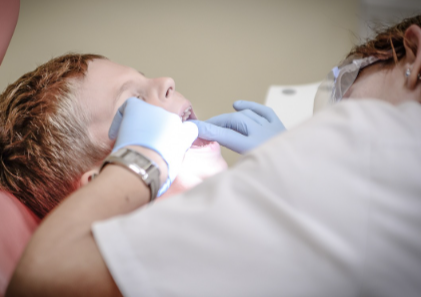Legal Action Rises as Suboxone Patients Allege Severe Tooth Damage

Opioids are an important drug class used for managing mild to severe pain and, sometimes, coughing and diarrhea. However, many individuals get addicted to opioids and end up overusing them to get high.
Opioid use disorder (OUD) affects more than 2.1 million Americans and over 16 million persons worldwide. Remarkably, the number of Americans with psoriatic arthritis diagnosis, epilepsy, or obsessive-compulsive disorder is equal to the number of people who routinely use opioids. Opioids are blamed for about 120,000 fatalities each year that occur around the world.
It has long been believed that suboxone is significant for aiding in the recovery of those who are dependent on opioids. Suboxone reduces cravings and withdrawal symptoms by combining the two active components, buprenorphine and naloxone.
This facilitates people’s transition away from opiate usage. However, an increasing number of patients are worried about a surprising side effect: serious tooth rot. Due to these worries, individuals have filed several lawsuits claiming that Suboxone significantly damaged their teeth, some of which required expensive and painful surgeries.
The Role of Suboxone in Addiction Treatment
Suboxone is frequently recommended as a component of medication-assisted treatment (MAT), a recovery approach for opioid use disorder that includes behavioral therapy and pharmaceuticals. Since the drug’s FDA approval in 2002, millions of people have used it to control their addiction and reduce their risk of relapsing.
It contains both naloxone, which inhibits the effects of opioids, and buprenorphine, which reduces cravings. Therefore, it has been hailed as a breakthrough in the treatment of addiction.
As stated by WebMD, buprenorphine acts on the same opioid receptors in your body as heroin, fentanyl, and oxycodone. However, it does not cause them to become as activated as those medications do. Thus, it does not provide a euphoric high and operates more slowly, resulting in reduced cravings and the symptoms of withdrawal.
Due to its ability to reduce overdose fatalities associated with opioids, Suboxone is now widely acknowledged as an essential component of rehabilitation programs. Many patients have found that the medicine has helped them take back control of their lives, keep their jobs, and mend relationships. Regretfully, despite these advantages, many users are becoming increasingly concerned about the documented tooth problems.
For what length of time do people usually take Suboxone?
The length of suboxone therapy varies based on a patient’s unique situation, including the degree of opioid dependence and the patient’s rate of recovery. While some people would only need to take the drug for a few months, others could need to do so for an extended period. Consultation with a healthcare practitioner determines the duration of therapy.
The Link Between Suboxone and Dental Problems
Suboxone is taken sublingually, which dissolves the drug beneath the tongue or in the cheek and allows it to go straight into circulation. Although this approach has shown promise in medication delivery, there is a possible increased risk of dental complications associated with it.
Patients have stated that they developed gum disease, tooth decay, and other oral health issues quickly and severely after using Suboxone. These abnormalities have occasionally arisen in people who had no notable dental history prior to this.
An NCBI article states that dentists should take an active role in reducing dental health problems among Suboxone users. They should know that if a patient is using Suboxone, they are likely facing OUD. Thus, they should be educated on how to take care of dental hygiene after taking the medicine to reduce complications. For instance, they can advise on rising with water after the medication use and brushing after an hour.
There are a few possibilities, but it’s unclear exactly why suboxone causes dental decay. The possibility of Suboxone causing dry mouth is one factor. Saliva is essential for tooth protection because it removes food particles and balances bacterially generated acids. A decrease in salivary flow can create an environment favorable to germs, which can lead to cavities and other dental issues.
However, the problem is that many patients are not aware of these potential health problems. The reason behind this is the lack of information shared by both manufacturers and doctors.
Patients who developed dental issues after using the medicine are now filing a Suboxone tooth decay lawsuit against the manufacturer. Through the lawsuit, they aim to recover losses for their sufferings and damages in the form of settlements.
Are all Suboxone users susceptible to dental decay?
Not every patient on suboxone will have serious dental issues. The risk might change depending on a person’s diet, hygiene habits, and dental health. Nevertheless, a lot of people say that they didn’t have serious tooth problems until they started using the drug.
Patients’ Allegations in Lawsuits
Suboxone’s producers have been the target of an increasing number of lawsuits in recent years, which claim the drug caused significant dental issues. According to TorHoerman Law, the makers are accused in these claims of failing to appropriately warn patients about the possibility of dental injury. The plaintiffs also allege that there was a lack of information on how to reduce that risk.
Patients who have filed these claims have disclosed a variety of dental problems, such as:
- Severe dental decay that required extractions, crowns, or fillings
- Gum disease that causes tooth loss, bleeding, and pain
- Expensive and painful dental operations, such as complete mouth reconstructions and root canals
Many of these patients contend that they would have chosen a different course of treatment if they had been told about the dental damage. Some have sustained such severe damage that they now need continuous care and maintenance for long-term oral health issues.
The number of Suboxone tooth decay lawsuits continues to rise in the country. As of October 2024, 674 active lawsuits were filed against the manufacturer. Even the FDA has now issued a warning about possible health problems and advised manufacturers to add them to the labeling.
What kind of damages are plaintiffs requesting in lawsuits involving suboxone?
In these claims, patients usually seek damages for lost pay, pain and suffering, mental anguish, and dental treatment costs. The degree of the dental injury and its effect on the patient’s quality of life determine how much compensation is awarded.
Impact on Patients
The effects of Suboxone-related dental issues for the parties suing extend beyond the discomfort associated with tooth-rotting. Due to their broken teeth, many patients report feeling embarrassed and socially isolated, which lowers their self-esteem and lowers their quality of life. The effects of dental discomfort and treatments have forced some people to change their occupations or take time off from work.
There is also a substantial financial strain. Large-scale dental procedures, including crowns, implants, and complete mouth reconstructions, can run into the tens of thousands of dollars. Many of them are left to foot the bill since their insurance does not cover all of these costs. Patients have occasionally stated that to pay for getting their dental health back, they had to take out loans or deplete their savings.
Read more: From Monolith to Microservices: Migrating Your Node.js App with Nest.js
Preventive Measures and Next Steps
Healthcare professionals and patients alike are searching for strategies to avoid dental issues while still taking advantage of the drug. Suboxone users should take additional care to preserve their oral health, according to some dentists. Some of these measures include drinking more water, using fluoride toothpaste, and making more regular dental appointments.
Nevertheless, these actions are taken too late for many patients. Individuals who have already sustained significant dental harm must now traverse the legal system in the hopes of being awarded damages for their injuries. Given the increasing number of litigations, it is unclear how the courts will decide in these instances and how it will affect patient education.
Another change is that many healthcare facilities are opting for alternative treatments. Data from a JAMA Network study shows that for opioid use disorder, just one in four adolescent treatment centers provide buprenorphine. Moreover, only one in eight prescribe the medication for ongoing treatment, considering its effect on dental health.
Suboxone users are filing more lawsuits, which is indicative of the rising worry over the drug’s effects on tooth health. Suboxone is an essential treatment for opiate addiction. However, tales of severe tooth rot have caused a great deal of criticism.
Patients are now resorting to the legal system to hold people accountable for harms they feel might have been avoided with accurate information. As these cases progress, the way pharmaceutical corporations handle patient safety and the requirement for openness about possible adverse effects may change.




